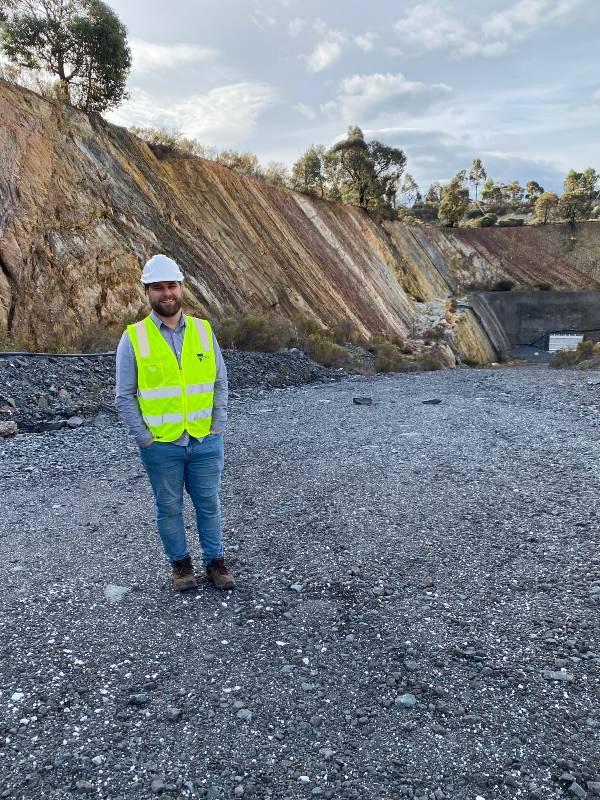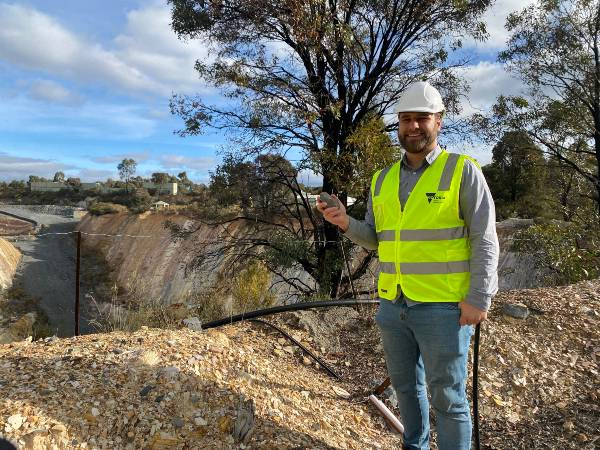Resources Victoria graduate Callum Simpson is enjoying getting out on site across regional Victoria to put his academic training into real-world practice.
Callum joined Resources Victoria in January, his technical services role sees him using the STEM elements of his studies in geology and environmental science to influence the next steps for two former gold mining sites.
His work is crucial in determining the long-term future of former mining land at Kangaroo Flat and within the Wombat State Forest. Through the graduate program, Callum is also developing project management and proposal writing skills, which will serve his career well into the future.
We put the following questions to Callum to understand more about him, his work at Resources Victoria and the Victorian Government's graduate program.

Tell us a bit about the work you're doing with the Earth Resources Regulator?
I have been working on the rehabilitation of the Kangaroo Flat Gold Mine, a large site on the outskirts of Bendigo. The operator went into liquidation and I'm now part of the team fixing up the site. At the moment, I'm taking the lead in procuring expert geotechnical advice regarding the safety of the old tailings facility, a large area where the mine previously stored mine waste.
I have also been working on the assessment of a small former gold mining site in Wombat State Forest. This has required visiting the site and consulting widely with the former mining licence holder, other teams in the regulator, other branches in DEECA and Parks Victoria. I'm helping make recommendations on how the site is managed into the future.
What do you find most rewarding about your role?
There's a strong element of problem solving. I enjoy researching an issue from different angles and finding a way forward.
How will your work with the regulator make a difference to the local environment/community?
My current work is particularly focused on environmental risks and risks to public safety posed by former mines. So, through assessment of risk and delivery of activities to make the land safe, we are ensuring the landscape will be better in the future for the public and to boost biodiversity.

What's inspired you to do this type of work?
My dad used to work for Parks Victoria and has been a biology and environmental science teacher for three decades. He always involved his students (and his kids!) in volunteer work for wildlife reserves across the Mornington Peninsula, Phillip Island and in the You Yangs. So, he was certainly an influence in pursuing work both in environmental policy and in the public service.
What advice would you give to other graduates about working in the resources sector?
Be curious. This work requires a broad understanding of different stakeholders and fields of science. The only way to learn is to be open to completely new ideas and knowledge. Dive in. Never turn down an opportunity to do field work or to visit a site. Reports, maps and satellite imagery never tells you the full story.






